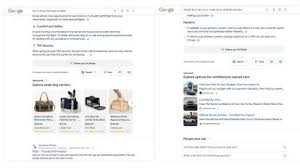Google bringing ads to AI Overviews in India, alongside new AI-driven marketing tools

In a landmark move that is set to reshape the future of digital advertising in India, Google has officially introduced ads within its AI Overviews, a feature that delivers AI-generated summaries directly at the top of search results. Alongside this, the tech giant has unveiled a suite of AI-powered marketing tools aimed at helping businesses connect with consumers in smarter, more personalized ways.
This rollout marks a significant evolution in how ads appear in search, potentially giving advertisers unprecedented reach—right at the top of the information funnel.
What Are AI Overviews?
Google’s AI Overviews are a new search feature that presents users with quick, AI-generated summaries to answer complex or multi-part queries. Instead of combing through individual links, users get a concise explanation synthesized from various sources—all delivered in a conversational, natural tone.
For example, if someone searches “best budget smartphones under ₹20,000 with good cameras,” the AI Overview would summarize the top options, include pros and cons, and potentially cite sources—all in one neatly packaged snippet.
Previously ad-free, these overviews are now being monetized in India, one of Google’s largest and fastest-growing digital markets.
Why This Move Matters
India has seen a massive surge in digital ad spending, particularly driven by mobile users and e-commerce. With over 800 million internet users and rising, India represents a goldmine for digital marketers. Google’s decision to bring ads into AI Overviews is a clear acknowledgment of this potential.
But it’s not just about expansion—it’s also about evolution. Ads are no longer just about visibility. They’re about being relevant in the moment, and Google’s AI Overviews are the new frontline.
How Ads in AI Overviews Work
The new format doesn’t require advertisers to create separate campaigns. Instead, Google’s AI pulls relevant ad content from existing Search, Performance Max, or Shopping campaigns and places them contextually within the overview.
These ads are marked as “Sponsored” and appear in between or after portions of the AI-generated text—not disrupting the experience but integrating seamlessly.
For instance, if a user asks, “What’s the best online course for graphic design?” they may see a Google AI Overview summarizing available platforms and then a sponsored ad for a course from Coursera, Udemy, or a local Indian institute.
New AI Tools for Smarter Campaigns
Google didn’t stop at the placement of ads. In parallel, it introduced several AI-driven marketing tools aimed at making campaign creation, targeting, and optimization easier and more effective.
1. AI-Powered Campaign Creation
Google Ads now includes agentic AI that can generate complete ad groups, keywords, and even creatives based on your business goals. This reduces the time and effort needed to launch new campaigns, especially for small businesses with limited teams.
2. Smart Bidding Exploration
This tool uses machine learning to identify hidden high-performance search queries and adjust bids automatically. Google claims some users have seen an 18% lift in conversions with this new feature.
3. Asset Studio
Need high-quality visuals or ad copy? The new Asset Studio uses generative AI to help you instantly create branded images, headlines, and descriptions optimized for performance across platforms.
Impact on Indian Advertisers
For Indian marketers, these developments bring both opportunities and challenges.
✅ Opportunities:
- Increased visibility: Ads appear right where users are searching for answers.
- Higher intent targeting: Being featured within AI summaries means your ad shows up when users are deeply engaged.
- Smarter automation: With tools like Asset Studio and Smart Bidding, even small advertisers can now compete effectively.
⚠️ Challenges:
- Higher competition: More brands will vie for the same spots, possibly increasing Cost-Per-Click (CPC).
- Creative demand: Ads need to be more informative, subtle, and helpful to fit within the AI context.
- Performance volatility: Early tests in other markets have shown click-through rates (CTR) can drop if ads aren’t well-tailored to the AI context.
How to Prepare Your Brand
If you’re an Indian business owner or marketer, here are five steps to capitalize on this change:
- Audit existing campaigns: Ensure your Search, Performance Max, and Shopping campaigns have high-quality headlines, keywords, and visuals.
- Use AI tools actively: Experiment with Google’s new Asset Studio and Smart Bidding to boost your efficiency.
- Think like a consumer: Craft ad content that blends with informative content, rather than standing out as overly promotional.
- Track CTR and conversion shifts: Monitor metrics before and after your ads appear in AI Overviews to understand what’s working.
- Keep creative fresh: With Google pulling ads directly into AI experiences, stale or irrelevant ads will stand out—for the wrong reasons.
Final Thoughts
Google’s expansion of AI Overviews and its integration with ads marks a paradigm shift in how search advertising works. Instead of competing for space among a list of blue links, brands now have the chance to join the conversation—appearing naturally within AI-generated answers to user questions.
For Indian advertisers, this is both a challenge and a massive opportunity. The brands that embrace these tools early and adapt their messaging to AI-first formats are likely to win big in the new search economy.






